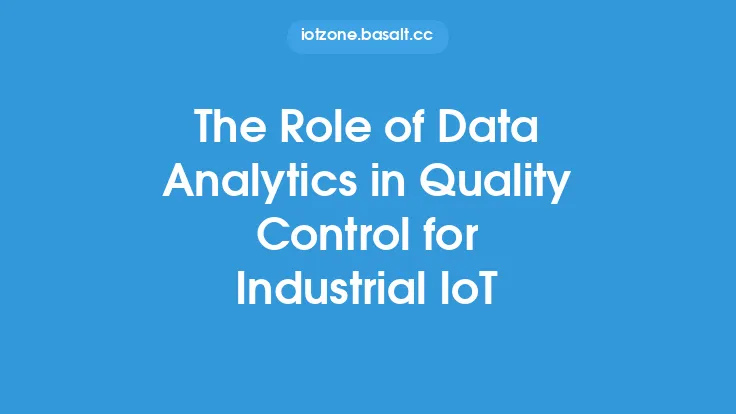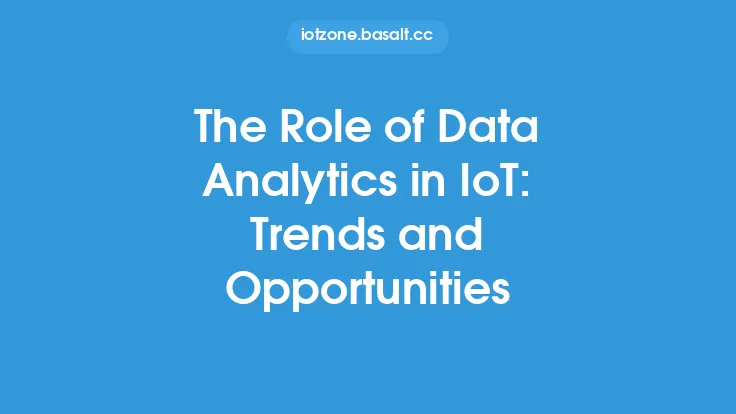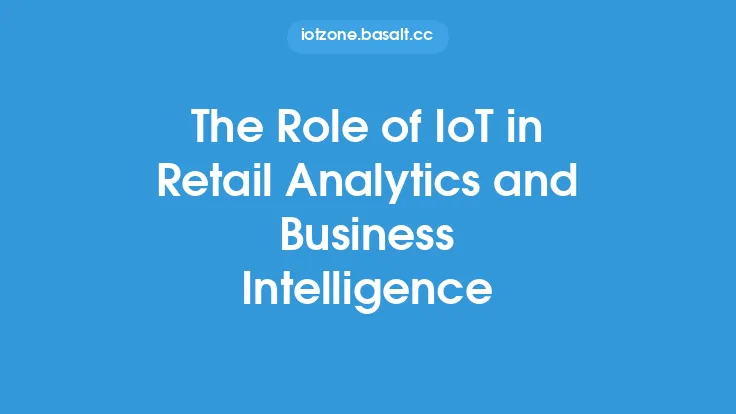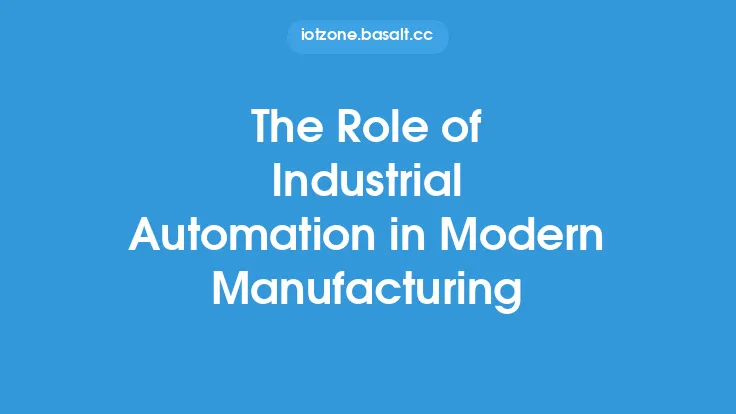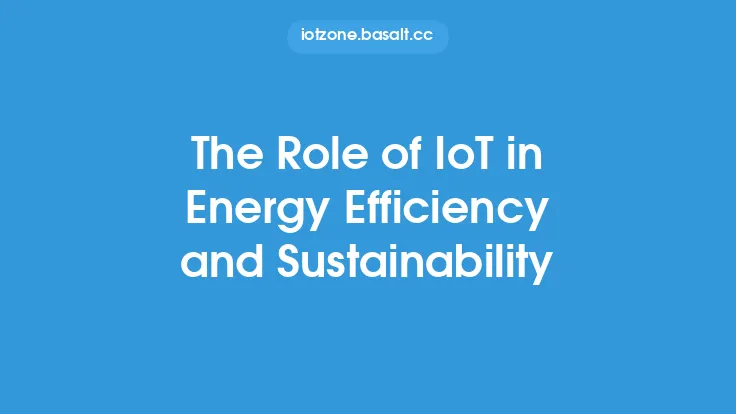The manufacturing industry has undergone significant transformations in recent years, driven by the advent of advanced technologies such as the Internet of Things (IoT), artificial intelligence (AI), and data analytics. Among these technologies, data analytics has emerged as a crucial enabler of manufacturing process optimization, allowing companies to unlock new levels of efficiency, productivity, and quality. In this article, we will delve into the role of data analytics in manufacturing process optimization, exploring its key concepts, benefits, and applications.
Introduction to Data Analytics in Manufacturing
Data analytics in manufacturing involves the use of statistical and computational methods to extract insights from data generated by various sources, including sensors, machines, and other industrial equipment. This data can be used to identify trends, patterns, and correlations that can inform decision-making and drive process improvements. By leveraging data analytics, manufacturers can gain a deeper understanding of their operations, identify areas for improvement, and optimize their processes to achieve greater efficiency, productivity, and quality.
Types of Data Analytics in Manufacturing
There are several types of data analytics that can be applied in manufacturing, including:
- Descriptive analytics: This type of analytics involves the use of historical data to identify trends and patterns in manufacturing processes. Descriptive analytics can help manufacturers understand what has happened in the past and identify areas for improvement.
- Predictive analytics: This type of analytics involves the use of statistical models and machine learning algorithms to forecast future events or trends. Predictive analytics can help manufacturers anticipate and prepare for potential problems or opportunities.
- Prescriptive analytics: This type of analytics involves the use of optimization techniques and simulation models to identify the best course of action. Prescriptive analytics can help manufacturers determine the optimal solution to a problem or the best way to achieve a goal.
Applications of Data Analytics in Manufacturing Process Optimization
Data analytics has a wide range of applications in manufacturing process optimization, including:
- Quality control: Data analytics can be used to monitor and control quality in real-time, reducing the risk of defects and improving overall quality.
- Predictive maintenance: Data analytics can be used to predict when equipment is likely to fail, allowing manufacturers to schedule maintenance and minimize downtime.
- Supply chain optimization: Data analytics can be used to optimize supply chain operations, including inventory management, logistics, and shipping.
- Energy management: Data analytics can be used to optimize energy consumption, reducing waste and improving overall efficiency.
Benefits of Data Analytics in Manufacturing Process Optimization
The benefits of data analytics in manufacturing process optimization are numerous and significant. Some of the most important benefits include:
- Improved efficiency: Data analytics can help manufacturers identify areas for improvement and optimize their processes to achieve greater efficiency.
- Increased productivity: Data analytics can help manufacturers optimize their production processes, reducing downtime and improving overall productivity.
- Better quality: Data analytics can help manufacturers monitor and control quality in real-time, reducing the risk of defects and improving overall quality.
- Cost savings: Data analytics can help manufacturers reduce waste, optimize energy consumption, and improve overall efficiency, resulting in significant cost savings.
Technical Requirements for Data Analytics in Manufacturing
To implement data analytics in manufacturing, several technical requirements must be met, including:
- Data collection: Manufacturers must have the ability to collect data from various sources, including sensors, machines, and other industrial equipment.
- Data storage: Manufacturers must have the ability to store and manage large amounts of data, including structured and unstructured data.
- Data analysis: Manufacturers must have the ability to analyze data using statistical and computational methods, including machine learning algorithms and optimization techniques.
- Data visualization: Manufacturers must have the ability to visualize data in a way that is easy to understand and interpret, including dashboards, reports, and other visualization tools.
Challenges and Limitations of Data Analytics in Manufacturing
While data analytics has the potential to revolutionize manufacturing process optimization, there are several challenges and limitations that must be addressed, including:
- Data quality: Manufacturers must ensure that their data is accurate, complete, and consistent, as poor data quality can lead to incorrect insights and decisions.
- Data security: Manufacturers must ensure that their data is secure and protected from unauthorized access, as data breaches can have significant consequences.
- Skills and training: Manufacturers must have the necessary skills and training to implement and use data analytics effectively, including data scientists, analysts, and engineers.
- Infrastructure: Manufacturers must have the necessary infrastructure to support data analytics, including hardware, software, and networking equipment.
Future of Data Analytics in Manufacturing
The future of data analytics in manufacturing is exciting and rapidly evolving. Some of the most significant trends and developments include:
- Artificial intelligence: AI is being increasingly used in manufacturing to analyze data, make predictions, and optimize processes.
- Internet of Things: The IoT is being used to connect machines, sensors, and other industrial equipment, generating vast amounts of data that can be used to optimize manufacturing processes.
- Cloud computing: Cloud computing is being used to store, manage, and analyze large amounts of data, providing manufacturers with greater flexibility, scalability, and cost savings.
- Edge computing: Edge computing is being used to analyze data in real-time, reducing latency and improving overall efficiency.
Conclusion
Data analytics has emerged as a crucial enabler of manufacturing process optimization, allowing companies to unlock new levels of efficiency, productivity, and quality. By leveraging data analytics, manufacturers can gain a deeper understanding of their operations, identify areas for improvement, and optimize their processes to achieve greater efficiency, productivity, and quality. While there are several challenges and limitations that must be addressed, the benefits of data analytics in manufacturing are numerous and significant, and the future of data analytics in manufacturing is exciting and rapidly evolving.
